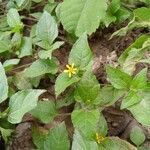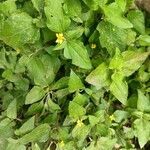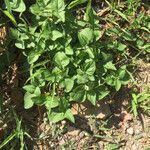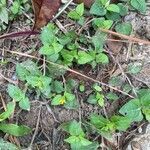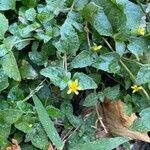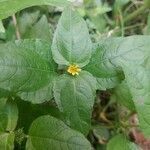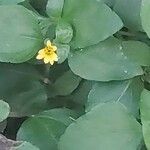Herbaceous annual or short-lived perennial; stems rounded, prostrate to 60 cm long, some-times rooting at nodes, with densely appressed hairs 0.2–0.6 mm long. Leaves ovate-triangular, 15–45 mm long, 8–40 mm wide, crenate-serrate, acute and apiculate, densely appressed-strigose on both surfaces, especially on abaxial surface; petiole 5–11 mm long, narrowly winged at apex. Capitula solitary at each node, 5–10 mm long; involucral bracts pilose; paleae white, linear-lanceolate, concavo-convex, entire or slightly laciniate, acute. Ray florets 3–7 (–8). Disc florets 3–7 (–8); corolla densely papillose within. Achenes obconical, slightly 3-or 4-angled, 3–4 mm long; ray achenes irregularly thickened on margins near apex; disc achenes ±smooth; awns erect and divergent, 1.5–2 mm long.
Leaf blades 1–3(–6) cm. Rays often inconspicuous, laminae mostly 2–5 mm. Cypselae 2–4 mm; pappi of ± erect to spreading awns, the longer 1–2(–3+) mm. 2n = 24.
